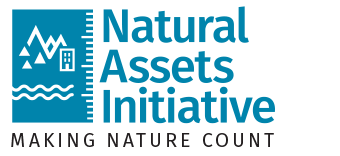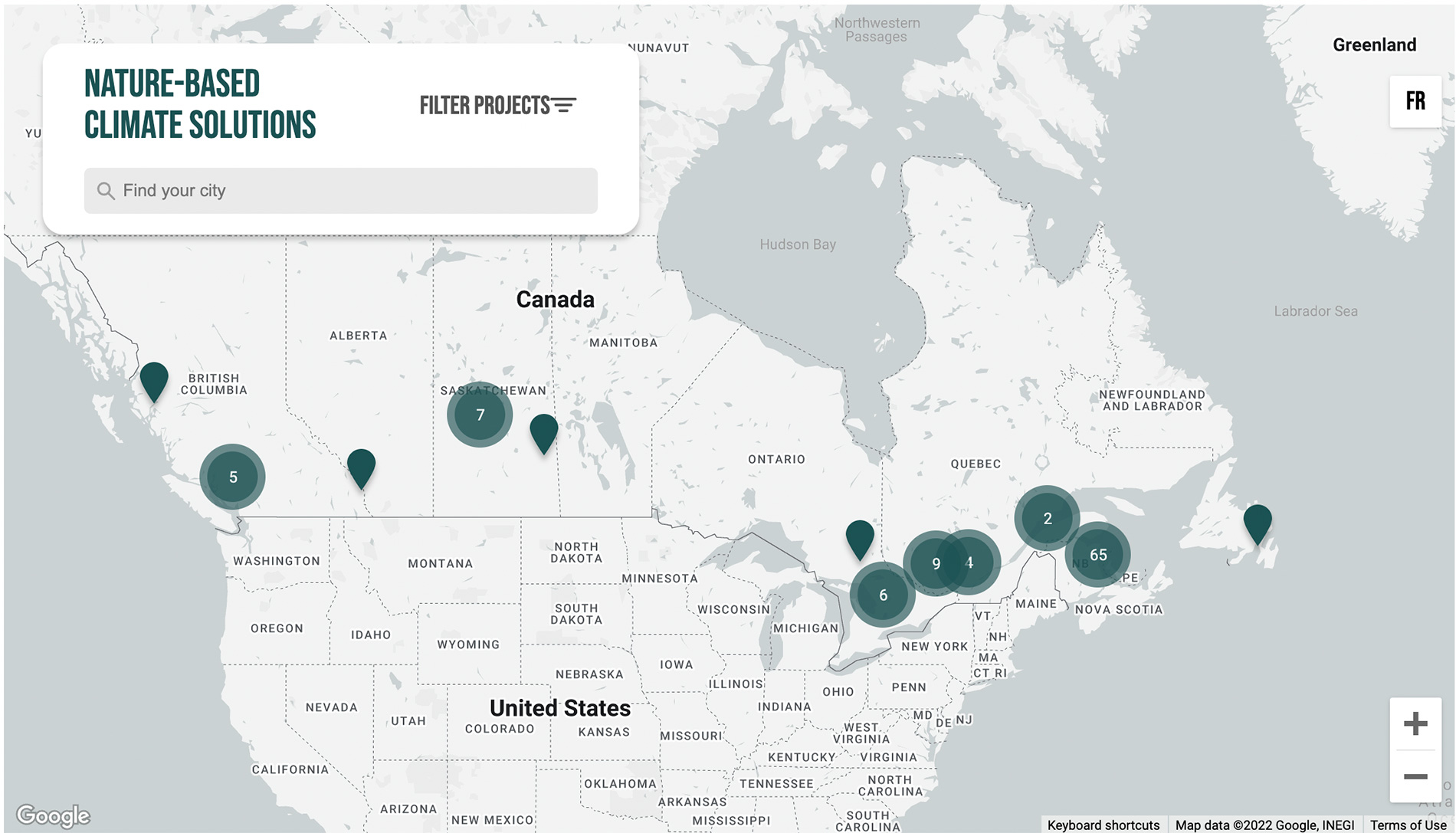Interactive Map Connects Nature-based Projects and Practitioners
The good news is that, due to a diversity of actors, there are many new innovative solutions and projects to drive progress in climate mitigation and resilience. The bad news is that the growth of isolated initiatives across Canada can lead to a lack of communication in the field. This can make it challenging to connect new knowledge and awareness to like-minded groups.
Thankfully, more help is in sight with the new Nature-Based Climate Solutions Map.
Developed by Nature NB and the New Brunswick Environmental Network (NBEN), the interactive Climate Solutions Map showcases nature-based and natural infrastructure projects being implemented across the country to advance climate resilience and mitigation.
“We started the project to create a launch point to connect interested parties with practitioners,” said Adam Cheeseman, Director of Conservation at Nature NB. Cheeseman explained how the Map grew from its initial focus on projects in Atlantic Canada to a more user-friendly, national scope through further collaboration with Nature Canada.
The tool is a central piece of the Natural and Nature-Based Climate Change Adaptation Community of Practice, an online community and platform maintained by NBEN. Users can both explore the various case studies and collaborators, and contribute projects of their own through an online form.
Highlighting the Rise of Natural Climate Solutions
Nature-based solutions (NbS), are defined by the International Union for the Conservation of Nature as “actions to protect, sustainably manage, and restore natural and modified ecosystems that address societal challenges effectively and adaptively, simultaneously benefiting people and nature.”
Natural infrastructure — actively managed natural systems and assets to sustainably meet environmental and economic needs — is a type of NbS and a focus of the Climate Solutions map.
Despite the growing use of natural infrastructure globally, and the Government of Canada commitment to nature-based solutions to help meet 2030 and 2050 climate change objectives, there remain misconceptions that NbS is a fringe approach.
Cheeseman explained how the Map helps to reveal the full scale of nature-based climate solutions today:
“There’s a lot going on in natural infrastructure. Seeing the breadth of projects helps to demonstrate that natural assets and natural infrastructure is an established field of practice.”
Validating NbS in the eyes of new practitioners will help expand its use to its full potential. A 2021 study, published in Science Advances, showed one pathway using natural climate solutions that could offset Canada’s emissions by 11 per cent annually.
Connecting a Community
The ultimate goal for the Map and the community of practice at large is to provide an opportunity to make connections between practitioners and stakeholders. This is important for those interested in pursuing NbS initiatives but who may not know where to start. It also provides a central hub where interdisciplinary groups involved in NbS projects can cross paths.
“In my experience, there are barriers to communication between sectors. People in the engineering community usually don’t have the contacts in the NGO circles,” said Cheeseman, who sees this as an opportunity to show what works and what doesn’t.
In addition to providing project location, descriptions, and collaborators case study contributors are also encouraged to share any “lessons learned” from their efforts.
The Map highlights natural asset assessment projects, such as MNAI’s case study with the City of Sparwood, BC, as well as restoration, outreach, and awareness initiatives, such as the Northumberland Strait Coastal Restoration Project and the Alus Saskatchewan Assiniboine Project.
The tool provides filters to select categories of interest, including municipal, watershed-level, and natural infrastructure initiatives. Nature NB worked with NBEN and Nature Canada to consolidate and streamline the categories and held user-workshops to improve platform experience.
Delivering a living map means that the project is never ‘complete’. Both the Map and NbS progress in Canada rely on consistent contributions and engagement.
A key to maintaining momentum behind NbS for climate is co-producing knowledge. A journal article published in BioScience covering the 2019 IPCC Cities and Climate Science Conference in Edmonton, highlighted collaboration and co-production as one of three critical areas for development to meet the challenges of NbS.
Pleased with how far they have come since developing the initial tool, Cheeseman looks forward to ongoing contributions of existing and new projects to fill in the gaps. He explained, “the more people who use and contribute to the tool, the more useful and beneficial it becomes to others”.
You can explore the Nature-Based Climate Solutions Map and virtual site tours here. If you are working on nature-based climate solutions you can add your project to the map today by filling out the Google Form or emailing [email protected].
The Climate Solutions Map complements other resources, such as the GIO Municipal Hub, which has the allied purpose of providing a one-stop-shop for resources that support municipalities (and other practitioners) in overcoming barriers and implementing more green infrastructure.



